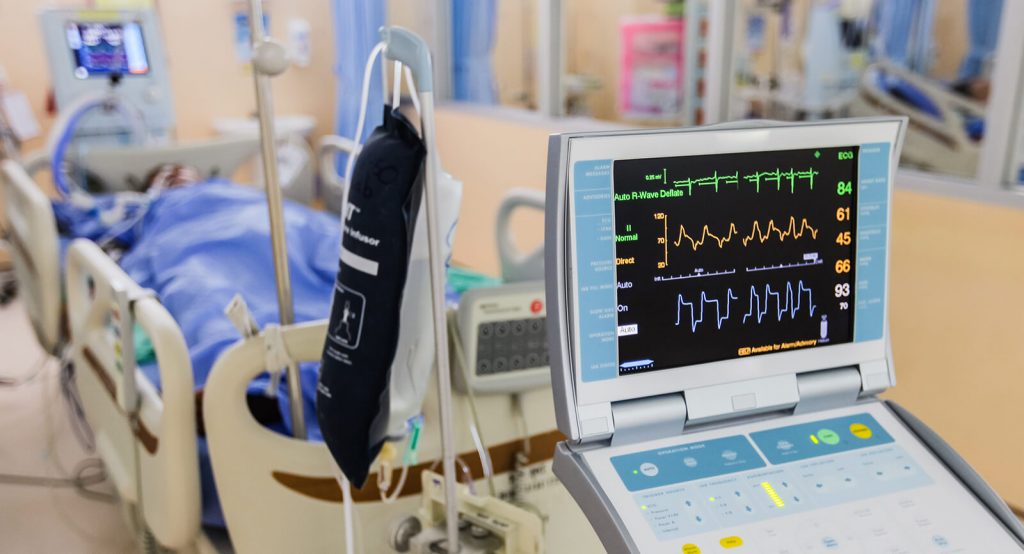How are Hospitals and Respiratory Care Departments Reimbursed for Respiratory Care Services?

For most products, paying for a service or item is a simple transaction based on the listed price. The merchant posts the price, the consumer agrees, makes the payment, and gets the product. As healthcare providers, we are bombarded with the question: ‘Why can’t you operate like other businesses?’ The short answer is that healthcare isn’t like other business because our products are people’s well-being and the services that we render are customized to meet the needs of each patient. For most of our US healthcare system history, we (i.e. hospitals, physicians) were reimbursed after the services were provided, known as retrospective payment. However, with the advent of the Prospective Payment System (PPS) in the mid-1980s for Medicare and by the mid-1990s for Medicaid and many commercial insurers, this ‘fee for service’ model began to be replaced by various PPS methodologies. The fundamental change that PPS created was to reimburse acute care hospitals based upon diagnosis rather than the services provided.
While PPS began the reimbursement revolution, older models that still exist, and several newer models have emerged that are based upon bundling, and shared-risk programs, all of which are challenging hospitals in ways never imagined just a few years ago.
In order to appreciate the value of respiratory care services in these models, I’ll define each and provide some thoughts as to how we fit into the various models. It should go without saying, but for ethical, safety, and professional reasons, we should never consider modifying our services based upon the reimbursement model. While the models change at the organizational level, the need to deliver, document, and communicate our value in terms of providing high quality, patient-centric, and cost-effective care remains constant.
The reimbursement methodologies are far more complex that this, but for our purposes, I’ll place them into 5 basic categories which the vast majority of hospitals are already familiar with at the organizational level:
- Retrospective Payment
- Prospective Payment
- Reimbursement based on value and outcomes
- Bundled Payments
- Shared Savings
Retrospective Payment
For the providers, retrospective payment has the lowest financial risk because the payer simply agrees to reimburse at a negotiated rate. There are two basic models of retrospective payment: 1) Charge-minus, and 2) Cost-plus. In the more popular charge-minus system, hospitals and payer negotiate a discount from the list price. Cost-plus systems have a negotiated % added to the hospital’s cost to arrive at a mutually agreed upon reimbursement.
For outpatient services, fee-for-service retrospective payment systems started with simple rate schedules for individual procedures. Through time, this system expanded to include grouping of charges under specified payment classifications. While these are fee-for-service based, we’ve seen the incorporation of additional requirements and regulations to ensure that the care is reimbursed at the lowest appropriate level.
Prospective Payment(PPS)
PPS is a reimbursement methodology in which reimbursement is based on a predetermined payment regardless of the specific services provided. Centers for Medicare and Medicaid Services (CMS) established PPS specifically to reduce the cost of hospital care. The burden is placed on the hospital to better manage costs for each case because reimbursement is essentially fixed for each diagnosis. [1]
The PPS system reimbursed providers based on predetermined prices that uses codes provided on the insurance claim as:
- Diagnosis-related groups (DRGs) for hospital inpatient claims
- Ambulatory Payment Classifications (APCs) for hospital outpatient claims
- Current Procedural Terminology (CPT) for other outpatient claims
For inpatient care, reimbursement is established based upon the national average cost of all cases assigned to the DRG in the prior year, and is adjusted for geographic area wage levels, allowance for capital expenses, status as a teaching hospital, and provision of uncompensated care. For outpatient and ED, reimbursement is based on APCs. Each APC contains numerous clinically coherent service/procedure CPT codes, which are created to align with similar costs. As with inpatient DRG reimbursement, the reimbursement amounts are modified, but only according to area wage index.
The PPS system not only challenged the mid-size and larger hospitals, but it threatened the existence of the small rural hospitals. Witnessing the closing of rural hospitals in the 1980s and 1990s, the federal government created a new designation-the Critical Access Hospital (CAH). CAHs are reimbursed by Medicare on the basis of documented hospital-specific cost of care rather than the prospective case rate methodology. Several criteria were established at that time (e.g. bed size equal/less than 25 beds) and additional criteria have been added more recently to ensure that this new reimbursement methodology is provided only to those hospitals with the greatest financial challenges under PPS.
Reimbursement based on value and outcomes
Of the various value based programs, three have shown the greatest impact on hospitals: 1) Hospital Value-Based Purchasing (HVBP), 2) Hospital Readmissions Reduction Program (HRRP) and 3) Hospital Acquired Conditions Program (HACP).
In the Value-Based Purchasing program, CMS rewards hospitals based on: 1) The quality of care provided to Medicare patients, 2) How closely best clinical practices are followed, and 3) How well hospitals enhance patients’ experiences of care during hospital stays. Under the Hospital VBP Program, Medicare makes incentive payments to hospitals based upon either how well they perform on each measure compared to other hospitals’ performance during a baseline period or how much they improve their performance on each measure compared to their performance during a baseline period. This is the only program of the three that has a bonus, with the bonus or penalty funded by 2% withhold throughout the year, with bonus/performance based upon range/distribution of participating hospitals and individual hospital’s performance versus prior year
The HRRP reduces payments to hospitals that demonstrate excess 30-day readmissions. The first year penalty was 1% and this increased over a three-year period to 3% in FY15. The initial three diagnoses in the program were acute myocardial infarction, congestive heart failure, and pneumonia. COPD was added in FY15. Two aspects of this program should be considered by RT leaders. The first is that the penalty is not just applied to the diagnosis (e.g. COPD), but rather to all Medicare admissions in a fiscal year. Thus, a 1-3% penalty is considerably larger than what one might expect if only looking at a particular diagnosis. Secondly, it is important that the RT leader understand that the ‘all cause-all condition’ clause indicates that the reason for the readmission is not limited to the discharged diagnosis (e.g. COPD), but to any reason that the admission was ‘unplanned’. For COPD patients, several studies have illustrated that discharged COPD patients are readmitted within 30 days for reasons including CHF, pneumonia, acute renal disease, and behavioral health.
The HACP’s purpose was to provide an incentive for hospitals to reduce hospital-acquired conditions. Hospitals that rank in the worst-performing 25% with respect to risk-adjusted HACP quality measures receive a 1% penalty. For RT leaders, this is yet another important aspect of care because hospital acquired conditions include pressure injuries resulting from oxygen and ventilation delivery devices (e.g. cannulas, masks).
Bundled Payments
The shift to value-based care has driven public and private payers to redesign reimbursement models that stress accountability for both costs and quality. Bundled payment arrangements are designed to pay providers for coordinating the total amount of services required for a single, pre-defined episode of care. In this model, providers and/or healthcare facilities are paid a single payment for all the services to care for a patient in a pre-determined episode of care. If provider costs exceed the pre-arranged reimbursement for the episode, they bear financial responsibility. One of the major challenges with bundled payments is managing costs for a patient’s treatment that may be out of the provider’s control, such as housing, literacy, transportation, social support, financing and others. Within the past few years, the issue of ‘social determinants of health’ has been raised and we now better understand that the majority of influences for the health of an individual or population lie outside the care provided by hospitals, physicians, and others. [2] While the challenges of social determinants are being addressed at the organizational level, RTs can certainly impact several of these challenges. For example, if one of your patients is prescribed for pulmonary rehabilitation, it’s crucial for the RT to discuss with the patient if she can afford the co-pay and has transportation to attend the classes. If the co-pay isn’t the issue but the person informs the RT that they don’t have transportation, the RT could inform the Social Worker and explain the importance of attending the rehab sessions and secure transportation.
Shared Savings
Shared Savings programs were developed to align with the Triple Aim, a framework developed by the Institute for Healthcare Improvement (IHI) to: 1) Improve the health of populations, and 2) Reduce the per capita cost of health care, and 3) Improve the patient experience of care. [3]
This model provides upside incentives and lowers risk for providers to improve the coordination of care and outcomes within an identified patient population. A pre-determined percentage of net savings may be further negotiated with the providers as an upside incentive. It is an alternative payment model that places accountability on the organization for a defined population, requires a high level of coordination within the system, and puts an absolute premium on the delivery of high quality, patient-centric, and cost-effective services. This program is seen to be important innovation for moving CMS’ payment system away from volume and toward value. [4]
Key Takeaways
- To understand the value that respiratory care services delivered by RTs bring to the health system, it is important for the RT to understand reimbursement methodologies.
- We are witnessing the greatest transformation of the US health care system as we transition from ‘volume to value’ and RTs are well positioned with regard to education and delivery of clinical services.
- For RTs to be seen as valued clinicians, they must provide services not only a cost-effective manner, but in ways that deliver high quality care that is patient-centric.
Meet The Expert
Garry W. Kauffman, RRT, FAARC, MPA, FACHE

Garry W. Kauffman, RRT, FAARC, MPA, FACHE is a registered respiratory therapist with over 40 years of experience. Garry was selected for the AARC Fellow (FAARC) based upon his contributions to the profession at the national level.
Garry received his MPA from The Pennsylvania State University, and achieved the distinction of board certification in health care (FACHE) from the American College of Healthcare Executives.
Beginning his career as a bedside clinician, Garry has served in clinical, educational, and administrative roles in a variety of healthcare organizations and venues from short-term acute carehospitals, physician practice, ambulatory services, and long-term acute care hospitals. He formedKauffman Consulting, LLC and is the manager of this health care consulting company.
Garry is recognized for numerous journal publications, author/co-author of respiratory care textbook chapters, and as a frequent speaker at the state and national level. Garry has served his profession at the district, state, and national level where he has served in the AARC House of Delegates, AARC Board of Directors, and AARC President. Garry has served his profession in various volunteer roles as the AARC Chartered Affiliate Consultant; AARC Benchmarking Committee; AARC Advanced Practice RT Task Force; AARC Strategic Planning Committee, Respiratory Care author/reviewer; AARCTimes author/reviewer, AARC Uniform Reporting Manual, and ARCF Education Recognition Award Judge, among others.
Garry’s focus continues to be on communicating the value of respiratory care services delivered by Respiratory Therapists by connecting the science of respiratory care, documenting outcomes secondary to our services, and communicating our value to key stakeholders in the health care system.
Garry Kaufmann is a paid consultant of Vapotherm.
REFERENCES
[1] www.cms.gov/Medicare/Medicare-Fee-for-Service-Payment/ProspMedicareFeeSvcPmtGen/index
[2] file:///C:/Users/gwkau/Documents/GK%20folder%2012%2022%2019/Population%20Health/Housing%20and%20the%20role%20of%20hospitals.pdf
[3] http://www.ihi.org/engage/initiatives/TripleAim/Pages/default.aspx
[4] https://www.cms.gov/Medicare/Medicare-Fee-for-Service-Payment/sharedsavingsprogram/about